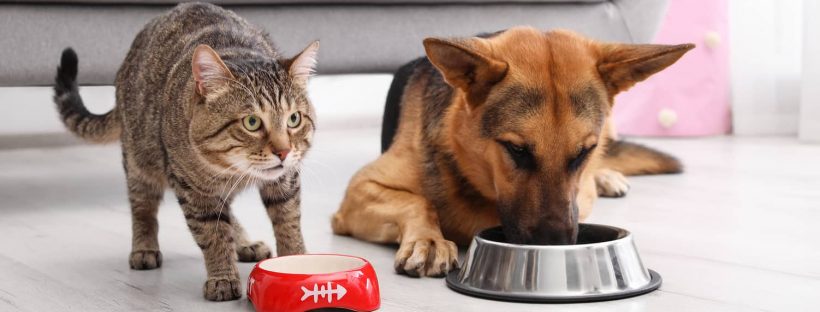Cats don’t have teeth as we do; instead, their mouths contain sharp-edged fangs called carnassials. They use them to tear into prey animals such as birds and rodents. Cats also have claws on all four feet, which help them climb trees and other vertical surfaces. Dogs lack these features. Instead, they rely on their powerful jaws to rip apart meaty bones. While both canines and felines require protein sources when eating, each species has different nutritional requirements.
Protein
Dogs require high levels of protein because they’re constantly growing. As puppies grow from 8 ounces at birth to 50 pounds by adulthood, they must consume more than twice their body weight every day just to stay alive. Adult male dogs typically weigh around 100 lbs., so this means they would need to ingest 200 lb. worth of food per day to meet basic nutrition guidelines. Female dogs usually only reach 70 lbs. during puppyhood but still need enough protein to maintain muscle mass throughout life.
Cat owners often feed their pets dry kibble made with animal proteins and grains. But unlike dogs, cats don’t need much protein. A 2 pound adult cat eats less than 1/2 cup of food daily.
Calcium
Both dogs and cats need calcium to build strong bones and teeth. However, dogs tend to develop stronger bones due to their larger size compared to smaller cats. This makes it important for canine dietitians to provide adequate amounts of calcium through foods rich in dairy products. Calcium isn’t naturally present in many plant foods, making it difficult for small carnivores to obtain sufficient quantities without supplementation.
Vitamin D3
While most people think vitamin D comes from sunlight exposure, some experts believe it may actually come from certain types of fish oil supplements. Vitamin D helps regulate bone growth in young mammals, including dogs and cats. It does not play any role in regulating blood pressure, heart rate, or immune system function. To ensure proper absorption of dietary vitamin D, supplementing with cod liver oil is recommended.
Iron
Because iron plays a vital part in red blood cell formation, maintaining good health requires consuming plenty of iron-rich foods. Both dogs and cats require approximately 10 mg of iron per kilogram of body weight daily. Iron deficiency leads to fatigue, weakness, pale gums, and even hair loss.
Fiber
Fiber promotes regular bowel movements and prevents constipation. In addition, it keeps digestive systems running smoothly and reduces gas production. Because dogs’ intestines are shorter than those of humans, they cannot absorb the same amount of fiber. Therefore, feeding whole-grain cereals containing bran will increase the overall volume of stool produced.
How Much Does Your Pet Eat Per Day?
When choosing a brand of dog or cat food, look for one that contains 30% crude protein and 15% fat. These percentages represent the minimum recommendations set forth by the American Association of Feed Control Officials. If you choose a product with higher nutrient content, make sure it doesn’t exceed 35% crude protein and 18% fat.
